MaryAnn Bernal's Blog, page 271
June 9, 2014
Fossils of dinosaur-era forest fire discovered in Canada
By Megan Gannon

In the badlands of southern Saskatchewan, Canada, scientists discovered evidence of a 66-million-year-old forest fire locked in stone.
Fossilized plants found on top of the layers of ancient charcoal show that forests bounced back from wildfires during the last days of the dinosaurs much like they do today, the new study found.
Dry, treeless grasslands cover much of southern Saskatchewan today, but 66 million years ago, the region was covered in swampy, lowland forests. It was perhaps six times rainier and 18-26 degrees Fahrenheit warmer than it is today, the researchers said. The area may have resembled North America's Pacific Coast, with forest canopies dominated by towering sequoias and a diversity of smaller plants growing closer to the ground. [See Photos of Fossils from the Ancient Forest]
The ancient forests also suffered the occasional fire. Researchers from McGill University, in Montreal, and the Saskatchewan Museum found evidence of one of those blazes among fossilized plants at Grasslands National Park, in a geologic layer known as the Frenchman Formation (so named because it's exposed around the Frenchman River).
This rock deposit is a natural time capsule from the Late Cretaceous Period, just before a mass extinction wiped out the dinosaurs. In this layer of stone and dirt, scientists have discovered the fossils of ancient turtles, crocodiles, croc-like champsosauruses, as well as dinosaurs, including Tyrannosaurus rex and the three-horned Triceratops horridus.
The scientists compared the fossils at Grasslands to another deposit without any fire disturbance, located about 125 miles away in a valley called Chambery Coulee. Differences in the type of plants found at both sites reveal how the prehistoric landscape recovered after a fire.
Similar to patterns of regrowth seen today, the fossils from Grasslands showed that plants like alder, birch and sassafras started popping up in the early stages after the fire. Meanwhile, the fossils from Chambery Coulee told the scientists that sequoia and ginkgo would have been thriving in mature forests that hadn't been scorched by a blaze.
The researchers hope their findings and further study will help them understand the forest ecology and biodiversity in this region immediately before the dinosaurs fell.
"We won't be able to fully understand the extinction dynamics until we understand what normal ecological processes were going on in the background," study researcher Hans Larsson, of McGill University, said in a statement.http://www.foxnews.com/science/2014/06/06/fossils-dinosaur-era-forest-fire-discovered-in-canada/


In the badlands of southern Saskatchewan, Canada, scientists discovered evidence of a 66-million-year-old forest fire locked in stone.
Fossilized plants found on top of the layers of ancient charcoal show that forests bounced back from wildfires during the last days of the dinosaurs much like they do today, the new study found.
Dry, treeless grasslands cover much of southern Saskatchewan today, but 66 million years ago, the region was covered in swampy, lowland forests. It was perhaps six times rainier and 18-26 degrees Fahrenheit warmer than it is today, the researchers said. The area may have resembled North America's Pacific Coast, with forest canopies dominated by towering sequoias and a diversity of smaller plants growing closer to the ground. [See Photos of Fossils from the Ancient Forest]
The ancient forests also suffered the occasional fire. Researchers from McGill University, in Montreal, and the Saskatchewan Museum found evidence of one of those blazes among fossilized plants at Grasslands National Park, in a geologic layer known as the Frenchman Formation (so named because it's exposed around the Frenchman River).
This rock deposit is a natural time capsule from the Late Cretaceous Period, just before a mass extinction wiped out the dinosaurs. In this layer of stone and dirt, scientists have discovered the fossils of ancient turtles, crocodiles, croc-like champsosauruses, as well as dinosaurs, including Tyrannosaurus rex and the three-horned Triceratops horridus.
The scientists compared the fossils at Grasslands to another deposit without any fire disturbance, located about 125 miles away in a valley called Chambery Coulee. Differences in the type of plants found at both sites reveal how the prehistoric landscape recovered after a fire.
Similar to patterns of regrowth seen today, the fossils from Grasslands showed that plants like alder, birch and sassafras started popping up in the early stages after the fire. Meanwhile, the fossils from Chambery Coulee told the scientists that sequoia and ginkgo would have been thriving in mature forests that hadn't been scorched by a blaze.
The researchers hope their findings and further study will help them understand the forest ecology and biodiversity in this region immediately before the dinosaurs fell.
"We won't be able to fully understand the extinction dynamics until we understand what normal ecological processes were going on in the background," study researcher Hans Larsson, of McGill University, said in a statement.http://www.foxnews.com/science/2014/06/06/fossils-dinosaur-era-forest-fire-discovered-in-canada/

Published on June 09, 2014 14:29
History Trivia - Roman Emperor Nero deposed
June 9

411 BC Coup in Athens succeeded, forming a short-lived oligarchy.

68 The Roman emperor Nero was deposed and committed suicide, ending the Julian-Claudian imperial dynasty.
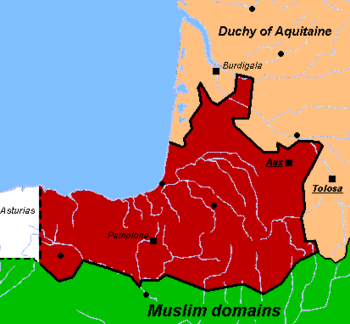
721 Odo of Aquitaine defeated the Moors in the Battle of Toulouse.

1310 Duccio's Maestà Altarpiece, a seminal artwork of the early Italian Renaissance, was unveiled and installed in the Siena Cathedral in Siena, Italy.

1549 Thomas Cranmer, Archbishop of Canterbury, issued The Protestant Book of Common Prayer, sparking a Catholic peasant rebellion.


411 BC Coup in Athens succeeded, forming a short-lived oligarchy.

68 The Roman emperor Nero was deposed and committed suicide, ending the Julian-Claudian imperial dynasty.

721 Odo of Aquitaine defeated the Moors in the Battle of Toulouse.

1310 Duccio's Maestà Altarpiece, a seminal artwork of the early Italian Renaissance, was unveiled and installed in the Siena Cathedral in Siena, Italy.

1549 Thomas Cranmer, Archbishop of Canterbury, issued The Protestant Book of Common Prayer, sparking a Catholic peasant rebellion.

Published on June 09, 2014 04:28
June 8, 2014
Elisabeth Marrion launches her new book, Liverpool Connection, at Foyles in Bristol
Special D Day event Saturday, June 7, 2014, at Foyles in BristolBook reading by Elisabeth Marrion Liverpool Connection - the second book in the Broken Bonds Trilogy



 Liverpool ConnectionAnnie and her friends leave Ireland in 1926 young and optimistic, hoping to find a better life in Liverpool. Only things do not turn out the way they had imagined.
Liverpool ConnectionAnnie and her friends leave Ireland in 1926 young and optimistic, hoping to find a better life in Liverpool. Only things do not turn out the way they had imagined.
Annie falls in love, marries and starts a family of her own. But with the onset of World War Two comes tragedy and loss, testing Annie’s strength to the limit.
Little does she realise that the salvation of her loved ones lies partly with a German woman named Hilde, whose life and situation mirrors Annie’s own.
Liverpool Connection is the second book of a trilogy and is based on a true story. The first book, The Night I Danced with Rommel, tells Hilde’s story. The books are historical novels based on facts and tell the writer’s family history. Amazon UShttp://www.amazon.com/Liverpool-Connection-Unbroken-Bonds-Book-ebook/dp/B00KTH29KI/ref=sr_1_fkmr0_1?ie=UTF8&qid=1402227190&sr=8-1-fkmr0&keywords=liverpool+connection+by+elizabeth+Morrison Amazon UK http://www.amazon.co.uk/Liverpool-Connection-Elisabeth-Marrion/dp/1781322295/ref=sr_1_1_bnp_1_pap?ie=UTF8&qid=1402227315&sr=8-1&keywords=liverpool+connection+by+elisabeth+marrion



 Liverpool ConnectionAnnie and her friends leave Ireland in 1926 young and optimistic, hoping to find a better life in Liverpool. Only things do not turn out the way they had imagined.
Liverpool ConnectionAnnie and her friends leave Ireland in 1926 young and optimistic, hoping to find a better life in Liverpool. Only things do not turn out the way they had imagined. Annie falls in love, marries and starts a family of her own. But with the onset of World War Two comes tragedy and loss, testing Annie’s strength to the limit.
Little does she realise that the salvation of her loved ones lies partly with a German woman named Hilde, whose life and situation mirrors Annie’s own.
Liverpool Connection is the second book of a trilogy and is based on a true story. The first book, The Night I Danced with Rommel, tells Hilde’s story. The books are historical novels based on facts and tell the writer’s family history. Amazon UShttp://www.amazon.com/Liverpool-Connection-Unbroken-Bonds-Book-ebook/dp/B00KTH29KI/ref=sr_1_fkmr0_1?ie=UTF8&qid=1402227190&sr=8-1-fkmr0&keywords=liverpool+connection+by+elizabeth+Morrison Amazon UK http://www.amazon.co.uk/Liverpool-Connection-Elisabeth-Marrion/dp/1781322295/ref=sr_1_1_bnp_1_pap?ie=UTF8&qid=1402227315&sr=8-1&keywords=liverpool+connection+by+elisabeth+marrion

Published on June 08, 2014 04:35
History Trivia - Attila the Hun invades Italy
June 8
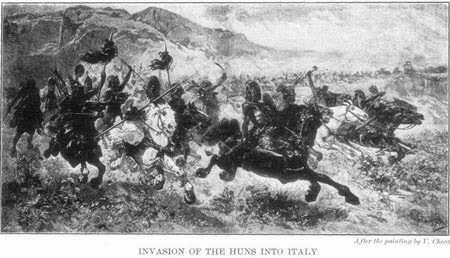
52 Italy invaded by Attila the Hun.

65 Jews revolted against Rome, capturing the fortress of Antonia in Jerusalem.

68 Rome Senate accepted Emperor Galba.

218 Opellius Macrinus, Emperor of Rome (217-8), died in battle. 4

536 St Silverius began his reign as Catholic Pope.

793 Vikings raid the abbey at Lindisfarne in Northumbria, and is commonly accepted as the beginning of the Scandinavian invasion of England.

1042 Harthacanute, King of Denmark and England died.

1191 Richard the Lion-Hearted of England arrived at the port of Acre in the Holy Land during the third Crusade. He captured Acre, but could not recapture Jerusalem from the Turks.

1376 Edward, the Black Prince died.
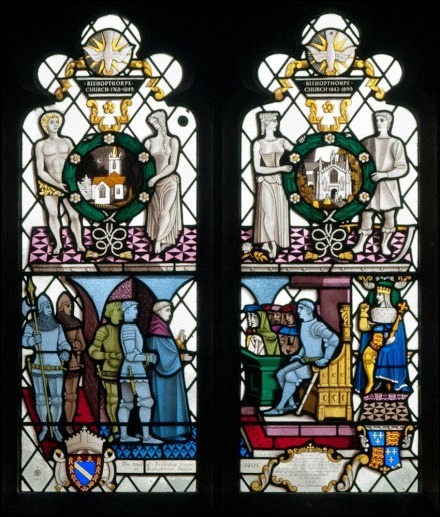 Trial of Richard le Scrope1405 Richard le Scrope, Archbishop of York and Thomas Mowbray, Earl of Norfolk, were executed in York on Henry IV's orders.
Trial of Richard le Scrope1405 Richard le Scrope, Archbishop of York and Thomas Mowbray, Earl of Norfolk, were executed in York on Henry IV's orders.


52 Italy invaded by Attila the Hun.

65 Jews revolted against Rome, capturing the fortress of Antonia in Jerusalem.

68 Rome Senate accepted Emperor Galba.

218 Opellius Macrinus, Emperor of Rome (217-8), died in battle. 4

536 St Silverius began his reign as Catholic Pope.

793 Vikings raid the abbey at Lindisfarne in Northumbria, and is commonly accepted as the beginning of the Scandinavian invasion of England.

1042 Harthacanute, King of Denmark and England died.

1191 Richard the Lion-Hearted of England arrived at the port of Acre in the Holy Land during the third Crusade. He captured Acre, but could not recapture Jerusalem from the Turks.

1376 Edward, the Black Prince died.
 Trial of Richard le Scrope1405 Richard le Scrope, Archbishop of York and Thomas Mowbray, Earl of Norfolk, were executed in York on Henry IV's orders.
Trial of Richard le Scrope1405 Richard le Scrope, Archbishop of York and Thomas Mowbray, Earl of Norfolk, were executed in York on Henry IV's orders.
Published on June 08, 2014 04:00
June 7, 2014
My review of Liverpool Connection by Elisabeth Marrion

Liverpool Connection gives an insight into the lives of people living during the blitz. We follow the challenges facing a young mother, Annie, as she cares for her children in difficult conditions - lack of heat, food, fear of the bombing raids.
I especially found the “how people actually lived” aspect of the story fascinating - Ms. Marrion breathes life into people who lived through the traumatic events of World War II. History textbooks just stick to the facts - I prefer knowing how people actually felt, which is precisely what the author conveyed in this page turner.
I felt as if I were part of Annie’s family, living through the hardships faced by those left behind while men went off to war - hardships worsened once the war was over as the devastated countries started to rebuild.
Liverpool Connection is a poignant tale of love, sacrifice and honor amongst the innocent civilians caught up in the politics of the day. I look forward to reading the next book in the series. Amazon UShttp://www.amazon.com/Liverpool-Connection-Elisabeth-Marrion/dp/1781322295/ref=sr_1_1?ie=UTF8&qid=1402156647&sr=8-1&keywords=liverpool+connection
Amazon UK
http://www.amazon.co.uk/Liverpool-Connection-Unbroken-Bonds-Book-ebook/dp/B00KTH29KI/ref=sr_1_1?ie=UTF8&qid=1402156731&sr=8-1&keywords=liverpool+connection+by+elisabeth+marrion

Published on June 07, 2014 08:59
History Trivia - Anne of Bohemia dies from plague
June 7
 421 Eudocia Athenais married Byzantine Emperor Theodosius II who constructed a series of defensive walls that surrounded and protected the city of Constantinople.
421 Eudocia Athenais married Byzantine Emperor Theodosius II who constructed a series of defensive walls that surrounded and protected the city of Constantinople.
 555 Vigilius, first Pope of the Byzantine Papacy, died.
555 Vigilius, first Pope of the Byzantine Papacy, died.

1099 first Crusaders arrived in Jerusalem.

1329 Robert Bruce, King of Scotland died.

1340 Rotterdam Netherlands founded.
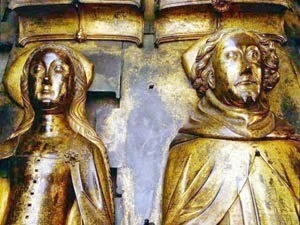 1394 Anne of Bohemia, wife of Richard II of England died from plague.
1394 Anne of Bohemia, wife of Richard II of England died from plague.
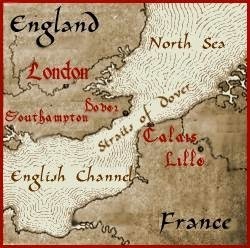
1557 England declared war on France.

 421 Eudocia Athenais married Byzantine Emperor Theodosius II who constructed a series of defensive walls that surrounded and protected the city of Constantinople.
421 Eudocia Athenais married Byzantine Emperor Theodosius II who constructed a series of defensive walls that surrounded and protected the city of Constantinople.  555 Vigilius, first Pope of the Byzantine Papacy, died.
555 Vigilius, first Pope of the Byzantine Papacy, died. 
1099 first Crusaders arrived in Jerusalem.

1329 Robert Bruce, King of Scotland died.

1340 Rotterdam Netherlands founded.
 1394 Anne of Bohemia, wife of Richard II of England died from plague.
1394 Anne of Bohemia, wife of Richard II of England died from plague.
1557 England declared war on France.

Published on June 07, 2014 04:46
June 6, 2014
Their Journey Begins by K Meador - audio book launch
 Their Journey Begins....A prequel featuring individual short story vignettes of Greggory, Robert, Marissa, and Daniel before their lives converge in Journey to Freedom.
Their Journey Begins....A prequel featuring individual short story vignettes of Greggory, Robert, Marissa, and Daniel before their lives converge in Journey to Freedom.Greggory is a half-breed; a mix of Indian and black blood, and struggles both emotionally and physically with hatred and prejudice. Robert is a slave on a Florida plantation who takes in the starving, angry young Greggory, under his wing and helps him grow into a man of honor.
Marrissa is a young girl who watches her mother waste away working as a maid in the saloon. Dodging the advances of the owner and his threats to put her in service, Marrissa dreams of having a better life and strikes out on her own after her mother's death.
Daniel is an introvert who finds safe haven away from civilization and his past. His business of trapping is successful and he finds contentment in the simple life he leads until he has two visitors.
Set amid the tumultuous backdrop of the American Civil War, Journey to Freedom, chronicles the harrowing misadventures of individuals through nineteenth century America, battling violence, prejudice, and the inherent struggles of their time. Join author K-Trina Meador for a touching saga of love, faith, and survival.
Audible:
http://mobile.audible.com/productDetail.htm?asin=B00KRIOVC8&s=s

Published on June 06, 2014 14:32
First 3D Flying-Reptile Eggs Discovered in China
By Tanya Lewis
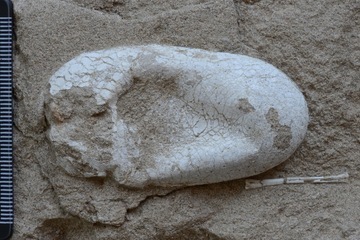
 A three-dimensionally preserved pterosaur egg that was found in the Turpan-Hami Basin in China.
A three-dimensionally preserved pterosaur egg that was found in the Turpan-Hami Basin in China.
Credit: Xiaolin WangThe first three-dimensionally preserved eggs of ancient winged reptiles that lived more than 100 million years ago have been unearthed in China.
Five intact eggs were found, along with dozens or more adult fossils, of a new type of pterosaur, a group of prehistoric winged reptiles that dominated the skies during the time of dinosaurs. These creatures included some of the largest flying animals that ever existed.
"We found a lot of pterosaur bones which belong to different individuals in the sites, with five eggs," said study researcher Xiaolin Wang, a paleontologist at the Institute of Vertebrate Paleontology and Paleoanthropologyat the Chinese Academy of Sciences in Beijing.
The fossil record of pterosaurs is lacking, and before now, only four individual flattened pterosaur eggs had been discovered by scientists.
The researchers found the fossils of the new genus and species, Hamipterus tianshanensis, in an area first excavated in 2005 in the Turpan-Hami Basin, located south of the Tian Shan Mountains in Xinjiang, in northwestern China. Thousands of bones may be hidden in the area where the eggs and skulls of adult male and female pterosaurs were found, the researchers said.
The newly uncovered pterosaurs likely perished in a storm about 120 million years ago, during the Early Cretaceous period, Wang said.
Wang and his team found that the eggs were soft and pliable, with a thin, hard outer shell and a thick, soft inner membrane, similar to the eggs of some snakes. The pterosaurs probably buried their eggs in the sandy shore of an ancient lake to prevent them from getting dried out, the researchers said.
The researchers also uncovered many adult pterosaur fossils nearby. They examined 40 male and female adult specimens, and found differences in the size, shape and robustness of the animals' head crests.
Like modern bats and birds, pterosaurs were flying vertebrates, but their wings were different. Birds have fused palms and asymmetric feathers, whereas bats and pterosaurs have membranes supported by fingers, Wang told Live Science. Bat wings are also attached to four fingers, while pterosaur wings are only attached to the fourth finger, he said.
The newly found cluster of fossils suggests these pterosaurs lived together in large social groups, the researchers said. The creatures likely belonged to gregarious colonies, because the fossils had not been transported far from where they originated, Wang said.
Finding the eggs near so many adult pterosaurs could indicate that a nest site may be nearby. The vulnerability of the pterosaur eggs may also explain why so few have survived in the fossil record, the researchers said.
Wang and his colleagues reported their findings today (June 5) in the journal Current Biology.
http://www.livescience.com/46124-ancient-pterosaur-eggs-found.html

 A three-dimensionally preserved pterosaur egg that was found in the Turpan-Hami Basin in China.
A three-dimensionally preserved pterosaur egg that was found in the Turpan-Hami Basin in China.Credit: Xiaolin WangThe first three-dimensionally preserved eggs of ancient winged reptiles that lived more than 100 million years ago have been unearthed in China.
Five intact eggs were found, along with dozens or more adult fossils, of a new type of pterosaur, a group of prehistoric winged reptiles that dominated the skies during the time of dinosaurs. These creatures included some of the largest flying animals that ever existed.
"We found a lot of pterosaur bones which belong to different individuals in the sites, with five eggs," said study researcher Xiaolin Wang, a paleontologist at the Institute of Vertebrate Paleontology and Paleoanthropologyat the Chinese Academy of Sciences in Beijing.
The fossil record of pterosaurs is lacking, and before now, only four individual flattened pterosaur eggs had been discovered by scientists.
The researchers found the fossils of the new genus and species, Hamipterus tianshanensis, in an area first excavated in 2005 in the Turpan-Hami Basin, located south of the Tian Shan Mountains in Xinjiang, in northwestern China. Thousands of bones may be hidden in the area where the eggs and skulls of adult male and female pterosaurs were found, the researchers said.
The newly uncovered pterosaurs likely perished in a storm about 120 million years ago, during the Early Cretaceous period, Wang said.
Wang and his team found that the eggs were soft and pliable, with a thin, hard outer shell and a thick, soft inner membrane, similar to the eggs of some snakes. The pterosaurs probably buried their eggs in the sandy shore of an ancient lake to prevent them from getting dried out, the researchers said.
The researchers also uncovered many adult pterosaur fossils nearby. They examined 40 male and female adult specimens, and found differences in the size, shape and robustness of the animals' head crests.
Like modern bats and birds, pterosaurs were flying vertebrates, but their wings were different. Birds have fused palms and asymmetric feathers, whereas bats and pterosaurs have membranes supported by fingers, Wang told Live Science. Bat wings are also attached to four fingers, while pterosaur wings are only attached to the fourth finger, he said.
The newly found cluster of fossils suggests these pterosaurs lived together in large social groups, the researchers said. The creatures likely belonged to gregarious colonies, because the fossils had not been transported far from where they originated, Wang said.
Finding the eggs near so many adult pterosaurs could indicate that a nest site may be nearby. The vulnerability of the pterosaur eggs may also explain why so few have survived in the fossil record, the researchers said.
Wang and his colleagues reported their findings today (June 5) in the journal Current Biology.
http://www.livescience.com/46124-ancient-pterosaur-eggs-found.html

Published on June 06, 2014 14:29
Hidden Beached Whale Revealed in 17th-Century Dutch Painting
By Megan Gannon,
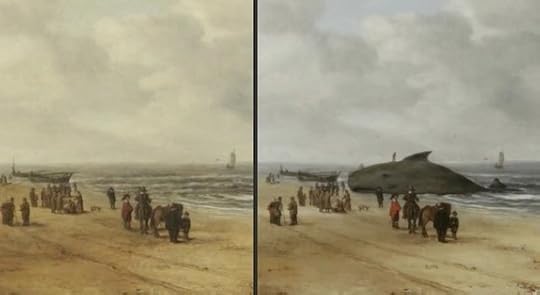 "View of Scheveningen Sands," before and after conservators uncovered a beached whale in the painting.
"View of Scheveningen Sands," before and after conservators uncovered a beached whale in the painting.
Credit: Fitzwilliam Museum View full size image
When art conservators in the United Kingdom were cleaning a 17th-century Dutch seascape, they found a surprise: an image of a beached whale that had been hidden for at least 150 years.
Until recently, the painting — "View of Scheveningen Sands," created by Hendrick van Anthonissen around 1641 — simply showed groups of people gathered on a beach in The Hague in the Netherlands.
"It seemed a very unassuming painting depicting a very calm beach scene set in winter," Shan Kuang, a conservation student at the University of Cambridge's Fitzwilliam Museum, said in a new video explaining the strange find. "There were clusters of people gathered. I was unclear why they were there, but it didn't seem too out of normal."
Kuang was tasked with removing a coat of varnish, which is typically found on oil paintings, but unfortunately yellows over time. When she began cleaning, a figure emerged on the horizon of the ocean next to a shape that looked like a sail. This was "extremely peculiar and unexpected," Kuang said. But further cleaning with a scalpel and solvent revealed the floating figure was actually standing on top of a whale, and what at first appeared to be a sail was actually the whale's fin.
At the time the painting was created, there was a surge of public interest in whales, researchers at the museum said, noting that historical records document a number of whale strandings on the coastline of the Netherlands in the beginning of the 17th century.
The Fitzwilliam Museum acquired "View of Scheveningen Sands" in 1873 when a donor handed over several Dutch landscape paintings. There is no indication that anyone at that time knew the van Anthonissen painting originally featured a beached whale. It's not clear when or why someone decided the whale had to go, but an analysis of the paint used to cover up the animal suggests the alteration took place in the 18th or 19th century before the painting was donated.
"Today, we treat works of art as entities, but in the previous centuries, paintings were often elements of interior design that were adapted to fit certain spaces — or adjusted to suit changing tastes," Kuang explained in a statement. "It's possible that the whale was removed because the presence of a dead animal was considered offensive — or perhaps without the whale the picture was more marketable."
The painting is on permanent display in the Fitzwilliam Museum's gallery of Dutch Golden Age painting.
http://www.livescience.com/46099-hidden-beached-whale-revealed-painting.html
 "View of Scheveningen Sands," before and after conservators uncovered a beached whale in the painting.
"View of Scheveningen Sands," before and after conservators uncovered a beached whale in the painting.Credit: Fitzwilliam Museum View full size image
When art conservators in the United Kingdom were cleaning a 17th-century Dutch seascape, they found a surprise: an image of a beached whale that had been hidden for at least 150 years.
Until recently, the painting — "View of Scheveningen Sands," created by Hendrick van Anthonissen around 1641 — simply showed groups of people gathered on a beach in The Hague in the Netherlands.
"It seemed a very unassuming painting depicting a very calm beach scene set in winter," Shan Kuang, a conservation student at the University of Cambridge's Fitzwilliam Museum, said in a new video explaining the strange find. "There were clusters of people gathered. I was unclear why they were there, but it didn't seem too out of normal."
Kuang was tasked with removing a coat of varnish, which is typically found on oil paintings, but unfortunately yellows over time. When she began cleaning, a figure emerged on the horizon of the ocean next to a shape that looked like a sail. This was "extremely peculiar and unexpected," Kuang said. But further cleaning with a scalpel and solvent revealed the floating figure was actually standing on top of a whale, and what at first appeared to be a sail was actually the whale's fin.
At the time the painting was created, there was a surge of public interest in whales, researchers at the museum said, noting that historical records document a number of whale strandings on the coastline of the Netherlands in the beginning of the 17th century.
The Fitzwilliam Museum acquired "View of Scheveningen Sands" in 1873 when a donor handed over several Dutch landscape paintings. There is no indication that anyone at that time knew the van Anthonissen painting originally featured a beached whale. It's not clear when or why someone decided the whale had to go, but an analysis of the paint used to cover up the animal suggests the alteration took place in the 18th or 19th century before the painting was donated.
"Today, we treat works of art as entities, but in the previous centuries, paintings were often elements of interior design that were adapted to fit certain spaces — or adjusted to suit changing tastes," Kuang explained in a statement. "It's possible that the whale was removed because the presence of a dead animal was considered offensive — or perhaps without the whale the picture was more marketable."
The painting is on permanent display in the Fitzwilliam Museum's gallery of Dutch Golden Age painting.
http://www.livescience.com/46099-hidden-beached-whale-revealed-painting.html

Published on June 06, 2014 14:23
Old chaps? 3,300-year-old trousers found in China may be world's oldest
Animal-fur menswear found on the bodies of two mummies in Xinjiang province 'almost the same shape as today's trousers'
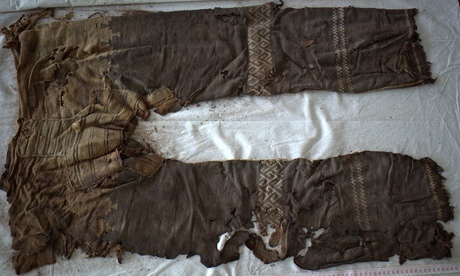
This pair of ancient Chinese trousers may have belonged to a male shaman. Photograph: M Wagner/German Archaeological InstituteTwo pairs of 3,300-year-old trousers found in China's far western Xinjiang region may be the world's oldest, according to state media.
Archeologists in May found animal-fur menswear on the bodies of two mummies, identified as male shamans in their 40s, the state-run China Daily cited scientists as saying.
An international team is working together to repair and preserve the two pairs, which are the oldest yet discovered with a clear resemblance to modern trousers, the report said.
"They were almost the same shape as today's trousers," the report quoted Lu Enguo, a researcher at the Institute of Archaeology in Xinjiang, as saying.
Even older apparel resembling trousers have previously been discovered in the region, but they were made according to a more simple design and lacked a piece of fabric covering the crotch, Lu added.
Archaeologists believe nomads living in the area invented trousers for horse riding. The nomads "at first wore a kind of trousers that only had two legs," said Xu Dongliang, deputy head of the institute, adding that "crotches were sewed on to the legs, and gradually other styles, such as bloomers, appeared".
Previously, the oldest pants found with a crotch were just 2,800 years old, the report said.
http://www.theguardian.com/world/2014/jun/06/oldest-trousers-found-in-china-mummies

This pair of ancient Chinese trousers may have belonged to a male shaman. Photograph: M Wagner/German Archaeological InstituteTwo pairs of 3,300-year-old trousers found in China's far western Xinjiang region may be the world's oldest, according to state media.
Archeologists in May found animal-fur menswear on the bodies of two mummies, identified as male shamans in their 40s, the state-run China Daily cited scientists as saying.
An international team is working together to repair and preserve the two pairs, which are the oldest yet discovered with a clear resemblance to modern trousers, the report said.
"They were almost the same shape as today's trousers," the report quoted Lu Enguo, a researcher at the Institute of Archaeology in Xinjiang, as saying.
Even older apparel resembling trousers have previously been discovered in the region, but they were made according to a more simple design and lacked a piece of fabric covering the crotch, Lu added.
Archaeologists believe nomads living in the area invented trousers for horse riding. The nomads "at first wore a kind of trousers that only had two legs," said Xu Dongliang, deputy head of the institute, adding that "crotches were sewed on to the legs, and gradually other styles, such as bloomers, appeared".
Previously, the oldest pants found with a crotch were just 2,800 years old, the report said.
http://www.theguardian.com/world/2014/jun/06/oldest-trousers-found-in-china-mummies

Published on June 06, 2014 14:17



